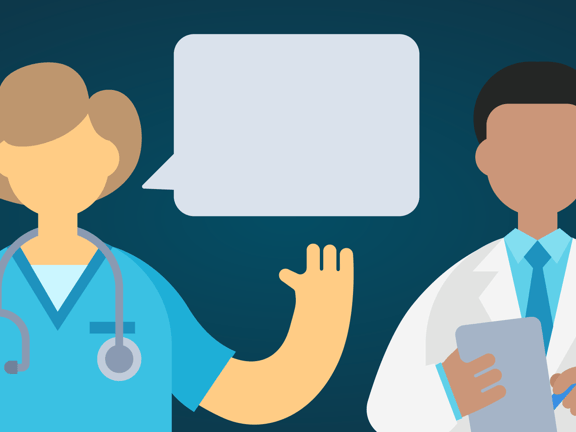Choosing Your Words: Communication in Healthcare
May 2, 2019
2 min. read

Communication is a vitally important aspect of healthcare. Patients communicate with healthcare providers. Aides communicate with practitioners. Practitioners communicate with each other.
How we communicate is important, but what we communicate can mean the difference between life and death.
Communication Barriers
There are many potential barriers to communication between healthcare team members, ranging from personality differences to gender, age, and ethnicity barriers. Some barriers are real while some are merely perceived, but all can interfere with effective communication. And any barrier that interferes with communication between members of the healthcare team can be harmful to the patient or resident.
One important barrier to effective communication in the healthcare setting is a lack of knowledge about what to communicate. For instance, imagine that your patient looks sick. Sicker than yesterday. But calling the physician to report, Patient X looks sick, is a hallmark of ineffective communication. What should you report instead?
Using TeamSTEPPS
Communication between healthcare providers is so important to patient and resident health that structured communication frameworks have been developed. One of the most applied in the healthcare setting is TeamSTEPPS.
According to the AHRQ, TeamSTEPPS is an evidence-based framework to optimize team performance across the health care delivery system.
While TeamSTEPPS can be an educational program for the entire team, it also has tools that individuals can use in their healthcare setting to facilitate communication, such as:
SBARa framework to communicate situation, background, assessment, and recommendation/request
Callouta strategy to communicate important or critical information
Checkbackclosed-loop communication to ensure that a message has been received by the listener in the way it was intended
Hand-offa strategy to enhance information exchange during transitions in care
Whether you use these tools or others, the importance of efficiently, effectively, and concisely reporting patient or resident information to the healthcare team cannot be overstated! The time you invest in perfecting communication techniques may save a life one day.
For more information about the TeamSTEPPS approach, visit the AHRQ website.
Below, watch Cheryl Lehman discuss the many roles of the rehabilitation nurse in a short clip from her MedBridge course, Managing Unexpected Events in the Rehabilitation Setting.






